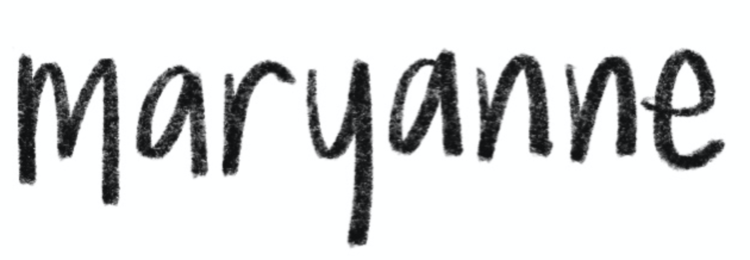Safety-First and Inclusive Illustrations — Lyft
Notes
I worked at Lyft for over a year, from September 2019 to December 2020. My role was as a Senior Product Illustrator for the Core Design / Illustration Team; I was incredibly fortunate enough to be collaborating alongside some of the best illustrators, Nick Slater and Meg Robichaud. When I joined, the style and guideline work was around 70% complete; I was part of the next 30% in defining the rest of the style and seeking consistency across the illustration system.
Here is a quick gloss of the highlights at Lyft:
Year
2021
Inclusivity as a core pillar
One of my favourite things that I could never ignore in my illustrations is inclusivity. The illustrations we do at Lyft allow the opportunity to tell stories for marginalised groups and create a platform for them to be heard, recognised, and empowered. We chose people as the anchor to our vision because it's made for our drivers and riders. We want those to feel safe and be their authentic selves regardless of race, gender, sexuality, or ability.
Families come in all types, love and fluidity. This was the illustration project I worked on for Lyft Family.
A great example of inclusivity would be Lyft Family.
Lyft Family allows you to link accounts with other riders. Your Family members can use a shared payment method to pay for all Lyft rides.
I wanted to look at different examples of families using Lyft, not just the traditional nuclear family. As someone who hasn't grown up in a traditional family structure, I wanted to empower those who see it to feel heard and recognised.
Safety is everything
Our goal is to ensure the illustrations convey Lyft's mission of a safe and comfortable ride from start to finish. Through educating our community and what's appropriate. It's not just thinking of physical safety (which is important!); it's also finding the right moments to showcase illustrations too. If drivers are in the middle of a drive, would it be the right moment to show them an illustration mid-drive? Thinking of the emotional state of the riders and drivers is pivotal to the experience.
During COVID, Lyft was very intentional to how we used illustrations. I had the opportunity to draw these for rider safety.
Transit Awareness project looked at introducing transit options during the time of pandemic in 2020. Given such a tricky and unprecedented time, we still wanted riders to feel safe whilst taking transit, especially if they needed to. Through the lens of the general chaos of transit, the narrative is told that sometimes picking the right transportation mode is tough, but Lyft can be simple. I explored different modes of transport and introduced more colour to mimic the transport lines across these illustration explorations. This is a subtle nod to the experience. When the Transit team released this experience, the retention increased by 18%!
Strengths in ideation and iteration
Every illustration done at Lyft was unique. We rarely re-used illustrations due to the nature that every experience is different across the product. This in mind meant that in every illustration/icon project, we explored numerous unique concepts.
Bless this mess of an Illustrator file
A good example of this would be the illustration project that I led for Prop 22. The request was around 20+ illustrations to be completed within 2 months. This project aimed to be educational and informative for drivers, but we still wanted the experience to feel very lightweight. Given how intense this flow was, the amount and choice of illustrations were intentional from beginning to end.
Storytelling is the heart and soul of Lyft Illustration
As illustrators, we're empathetic to the experiences and stories that we visually tell. Each story is part of the illustration universe that we create. The story allows riders and drivers to resonate, be part of the journey, and to some degree, make things visually comprehensible.
Matching Tour told these micro-stories that shape the bigger narrative of catching a ride. The product team broke down these key moments, and it was up to me to paint that story. I wrote down the feelings and excitement I felt when waiting for a Lyft. Things like: When a driver would wave as they pull up in front of me, mimicking that feeling of excitement when I could see multiple drivers nearby, these are the stories I resonate with. I intentionally elevated these illustrations to be more delighted with the colour and the movement within them as the celebration with these were key.
A close up of the illustrations in the flow. I drew these for the loading state as you’re waiting for your ride.
With all our illustrations we pair the visual with the copy and ensuring there is alignment and understanding
Scalability and system
Thinking about how illustrations and iconography scale is crucial for the design system. Both visual assets are used in a way that is catering to the user. We never see our illustrations and icons as standalone visuals, they extend further into our visual language.
The Transit team found there were some size and optical issues across their icons:
Walk: It looked oddly bigger in comparison to the rest of the set
Bike: Do we include a person riding a bike or not?
Subway: Looks smaller in comparison to the rest of the set
There was also a need for new Transit icons. With the growing list of icons ahead, it was key to think about the glanceability of these and how they read from LTR / RTL as they are usually not working alone. It was intentional that the icons were different, and choosing icons for different angles to help with differing visually between one's transportation journey.
In-context example. You begin to see how the new icons are sized correctly and feel more optically aligned. Additionally how easy it is to read across for the transportation journey.










